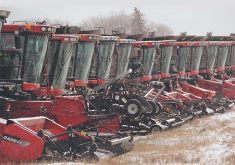ANAHEIM, Calif. — The third of three big mergers in the agriculture seed and chemical business is nearing completion, and that is not good news for farmers, says the head of a network of growers.
Reuters is reporting that the European Union is poised to give its approval to Bayer’s takeover of Monsanto before its decision deadline of April 5.
The German company hopes to close the transaction in the second quarter of 2018.
ChemChina’s acquisition of Syngenta is complete, as is the merger of Dow Chemical and DuPont.
Read Also

India slaps 30 per cent import duty on yellow peas
India has imposed a 30 per cent duty on yellow pea imports with a bill of lading date on or after Nov. 1, 2025.
The companies say farmers will benefit from the mergers through cost efficiencies and improved research and development efforts.
However, history shows otherwise, according to a report produced by Farmer’s Business Network, a group dedicated to providing its members price transparency for chemicals and fertilizers in addition to “unbiased” analytics.
Charles Baron, cofounder of the network, said it analyzed tens of thousands of chemical and seed invoices submitted by hundreds of network members to see what happened to prices as a company’s market share increased.
“What we found was unquestionable. As the market share of a given company increased, so did its prices,” Baron said during an interview at the 2018 Commodity Classic.
Baron also disputes the notion that companies need to get bigger to continue innovating because the costs of getting a trait or new active ingredient to market are astronomical and continuing to rise.
David Hollinrake, president of Syngenta Seeds, made that point during a presentation at the same conference.
“One of the questions that we often get in this industry is why is consolidation happening and why is it happening at a rapid pace?” he said.
“One of the reasons is the scale required to innovate.”
It takes an average of $142 million and 13 years to bring a new trait to the marketplace.
However, Baron said those costs are coming down dramatically because of new breeding technologies such as gene editing and CRISPR.
“You do not have to have a multibillion-dollar R&D program to roll out new technology. A host of companies can start doing it,” he said.
The bottom line is that consolidation in the crop input business will result in higher costs and reduced benefits for farmers, said Baron.
That is worrisome considering that U.S. farm income has been on a downward trend since 2013 and the USDA is forecasting another 6.7 percent decline in 2018.
He is also concerned that consolidation will lead to even less transparency in the $26 billion U.S. seed and chemical business.
“Why is there such a large industry with no transparent prices, no prices put online?” he said.
“The only reason that you can explain why that has taken place is that the industry is so large they can get away with not doing it.”
















